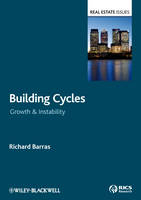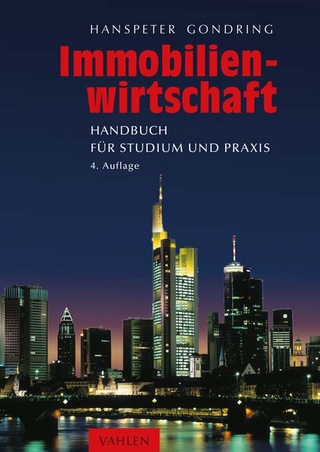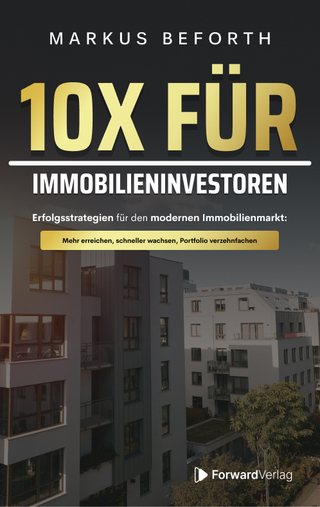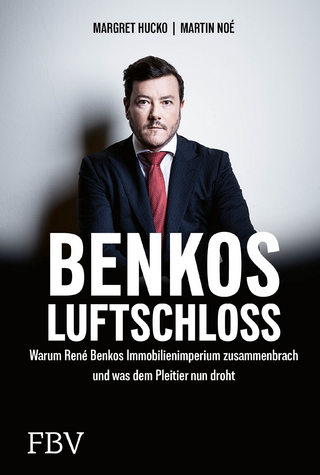
Building Cycles
Wiley-Blackwell (an imprint of John Wiley & Sons Ltd) (Verlag)
978-1-4051-3001-1 (ISBN)
- Titel ist leider vergriffen;
keine Neuauflage - Artikel merken
The analysis is then broadened to examine the operation of property cycles in global investment markets during the post-war period, focussing on their contribution to the diffusion of innovation, the accumulation of wealth and the propagation of market instability. Building Cycles: growth & instability concludes by synthesizing the main themes into a theoretical framework, which can guide our understanding of the operation and impact of building cycles on the modern economy. Postgraduate students on courses in property and in urban development as well as professional property researchers, urban economists and planners will find this a stimulating read - demanding but accessible.
Dr Richard Barras, Senior Partner, Property Market Analysis LLP
Preface Abbreviations used in the text 1 Introduction: A Historical Approach The idea of cyclical growth A historical perspective Historical examples Imperial Rome Tudor and Stuart London An illustrative building cycle: London (1714-1900) The structure of the book 2 Growth and Cycles: The Economic Debate The underlying theme The growth story The classical economists The neoclassical revolution Technology and growth Keynes The neoclassical growth model Modern growth theory Historical dependence Historical perspectives on business cycles Pioneering studies Measuring trend and cycle A family of cycles Long waves Business cycle theory Impulse and propagation: Multiplier-accelerator models Non-linear models Rational expectations New Classical theory New Keynesian theory Summary: Theories of growth and cycles 3 The Nature of Building Cycles A long and violent cycle Historical building cycle research The first wave of empirical studies Theoretical perspectives The post-war empirical tradition Three key studies Modern property cycle research Long cycles: Fact or artifact? New perspectives and established traditions viii Contents The formation of market expectations The integration of real estate and capital markets Globalization and speculative bubbles Towards a satisfactory theory of the building cycle What we know about building cycles A conceptual model of the building cycle 4 Building Investment and Economic Growth Buildings as means of production Investment and technical progress Building versus equipment capital Cyclical growth Building investment as driver of growth Building investment and UK (1855-2005) A growth model with building capital The trajectory of US growth (1929-2005) Building investment as generator of cycles The identification of economic cycles UKinvestment cycles (1855-2005) US investment cycles (1901-2005) Appendix: The growth model 5 Building Investment and Urban Development Urban innovation and accumulation The city in history Urban agglomeration The growth of cities Transport and suburbanization A comparison of UK and US urban development cycles The data Structural models Growth trajectories Long cycles Cycle phasing Explanatory variables Cycle histories Variations in growth The transport-building cycle Turning points A UK building cycle chronology (1785-2005) Long cycles and major cycles The first industrial revolution (1785-1856) The second industrial revolution (1856-88) The age of electricity (1888-1918) Inter-war turbulence (1918-44) The post-war consumer boom (1944-81) The computer age (1981-2008?) The London building cycle (1714-2005) Middlesex deeds (1714-1900) London house-building (1856-2005) A London building cycle chronology 6 Case Study: The City of London Office Market The development of the city economy City of capital The City in the sixteenth to eighteenth centuries The Victorian and Edwardian City The inter-war City The post-war City The growth trajectory of the City economy (1970-2005) The City office-building cycle Modelling the cycle Cycle turning points The cycle chronology Victorian and Edwardian cycles (1866-1914) Inter-war cycles (1921-35) Early post-war cycles (1955-79) The last two cycles (1979-2005) Vintages of City office stock Locational clusters Building size Redevelopment and obsolescence Rent formation Occupier profiles 7 A Simulation Model of the Building Cycle Real estate models Stock adjustment models Rent adjustment models Multi-equation models Specification of the model Underlying assumptions Model structure Determinants of model behaviour Model simulations Equilibrium and displacement Cycle transmission Damped and explosive cycles Different construction lags Floor and ceiling constraints Persistent under- or over-supply Alternative rent adjustment processes Rent elastic occupier demand Elastic depreciation Business cycle in demand Modelling the City of London office market Take-up and occupier demand Vacancy change Rent adjustment Development supply Building completions 8 Property Cycles in Global Investment Markets Instability and growth in real estate investment The crash of 2008 The property cycle and the business cycle Property as an investment medium The post-war property cycle in the United Kingdomand United States A model of the national property cycle The housing market The industrial and commercial property market The interaction of occupier and investment markets The globalization of the property cycle The growth of the transnational investment market Global cities, global cycle The determinants of market behaviour Some stylized facts about the global office cycle The global diffusion of property innovation The rise of the skyscraper The spread of the shopping centre Into the twenty-first century Appendix: An error correction model of the property cycle 9 Understanding the Building Cycle Building cycles and economic growth Cyclical growth Technological revolutions Historical dependence Growth and technical progress Building investment and productivity growth Technical progress in construction technology Building cycles as driver of growth Propagation of the building cycle The trajectory of building investment Impulse and propagation in cycle generation A circular transmission process Determinants of cyclical behaviour A family of building cycles The rhythm of post-war cycles Building cycles and urban development The urban development cycle Urban growth and agglomeration Innovation and accumulation in urban development A self-reinforcing process of metropolitan growth The transport-building cycle Transport investment and suburbanization The urban office economy Integration of real estate and capital markets Property as an investment medium The contradiction between investor and occupier demand The cyclical movement of real estate values Contents xi The intensification of the commercial building cycle The property cycle and the business cycle Speculative boom-bust cycles Globalization of the building cycle The growth of the transnational investment market The international convergence of cycles The global office market The global office cycle The global diffusion of property innovation Interactive innovation in retailing Into the twenty-first century Appendix A Building Trend and Cycle Analysis Appendix B The Building Cycle Model References Index
| Erscheint lt. Verlag | 25.9.2009 |
|---|---|
| Reihe/Serie | Real Estate Issues |
| Verlagsort | Chicester |
| Sprache | englisch |
| Maße | 181 x 249 mm |
| Gewicht | 1116 g |
| Themenwelt | Naturwissenschaften ► Geowissenschaften ► Geografie / Kartografie |
| Technik ► Bauwesen | |
| Wirtschaft ► Betriebswirtschaft / Management ► Rechnungswesen / Bilanzen | |
| Betriebswirtschaft / Management ► Spezielle Betriebswirtschaftslehre ► Immobilienwirtschaft | |
| ISBN-10 | 1-4051-3001-6 / 1405130016 |
| ISBN-13 | 978-1-4051-3001-1 / 9781405130011 |
| Zustand | Neuware |
| Haben Sie eine Frage zum Produkt? |
aus dem Bereich


